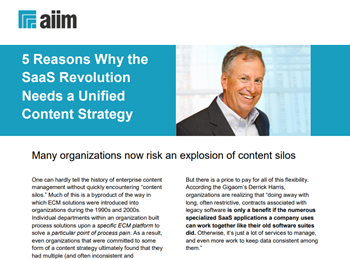The majority of businesses today run at least some of their operations using cloud software. But for those that are still dependent on legacy systems, there's never been a better time to finally take the plunge and migrate to cloud tools, especially for the key software applications that all companies depend on.
Why move to the cloud now?
A common objection among businesses that still rely on on-premise solutions is that their legacy applications are essential to the smooth running of their business. They worry that these services won’t perform effectively in cloud environments or will need to be replaced entirely, or that the migration process will cause so much disruption as to negate any of the benefits.
However, sticking with such systems can cause more problems in the long-term, especially in the remote environment. Many companies will have had to switch at least partially to remote working in 2020, and those with Software-as-a-Service (SaaS) solutions will often have found this much less disruptive than those still using legacy tools.
Aside from making it easier to view critical data and applications from anywhere, cloud tools offer access to the latest technologies such as AI, promise advanced security tools and the ability to respond faster to evolving demands.
7 steps for a smooth transition to SaaS
For many, the SaaS migration process will still be a cause for concern, especially when it comes to moving legacy systems relatively intact from on-premise to cloud environments. Getting this right is essential in making cloud computing a success, but if it's poorly-planned or badly executed, the costs can be severe.
Here are some key steps you need to take throughout the migration process to switch to the SaaS business model.
1. Understand your environment
Before you initiate the SaaS migration process, you must conduct a comprehensive review of your current IT environment. This should establish what data you have, what applications you're using, where all these assets are stored and how they're accessed. You should also look closely at the connections between systems, including dependencies, as it’ll be vital these relationships are maintained in the cloud.
This process also needs to determine which applications and data should be prioritized for migration and which may be replaced or abandoned entirely if no longer relevant.
2. Select the right provider
Not all cloud providers are equal, and your selection will go a long way in determining the success or failure of your business transformation. Factors to consider include both technical requirements like storage, computing power and load balancing, as well as issues such as customer service and service level agreements.
You should also be determining the type of cloud environment that’ll work best for you. Do you want to opt for a public cloud solution, a private cloud or a hybrid that combines the two?
3.Get your applications cloud-ready
A key part of the migration process will be ensuring your applications are able to function efficiently when transferred to cloud architecture. The simplest way to migrate to the cloud is with a 'lift and shift' approach, where processes are moved with minimal changes, but this may not get the most out of the technology.
For the best performance, a deeper integration will be needed, which will often require you to make changes and optimizations. Therefore, it's vital you determine early which approach you’ll use and what you'll need to adjust to take advantage of the new environment.
4.Make deployment a gradual process
While it can be tempting to take the plunge in one go to get up and running as fast as possible, patience is definitely a virtue when it comes to cloud migrations. If you opt to move mission-critical systems in one go, you run the risk of serious downtime if any unexpected problems arise.
Taking a gradual approach allows you to iron out any teething troubles on smaller parts of the enterprise that won't have a major impact on the day-to-day running of the business. Throughout the process, it's important you have strong synchronization solutions in place to ensure any changes made are reflected on the cloud systems as well as on-premises.
5.Migrate your data carefully
When it comes to critical data, make sure you retain backups of everything, so that if something does go wrong, you can quickly revert to existing solutions until the issue is fixed.
Start with services that have the fewest dependencies and those that don't deal with highly sensitive data. A good place to begin may be analytics operations. These typically make up an important part of any company’s data infrastructure and are used by innovative teams, yet aren’t at the core of day-to-day operations.
6.Switch production
The final switchover of production operations from legacy on-premises tools to the cloud is the critical step, and you can choose to do this in one go or adopt a more gradual approach. A good solution, where possible, is to move a few customers over at a time and test to ensure everything works as expected before moving on to the next batch.
7.Sunset legacy systems
Once all customers and processes are on the cloud, the time has come to turn off the remaining legacy databases. Start by disabling access to these systems so customers are automatically directed to the cloud services. Once you've determined there’ll be no further issues that may require you to rollback to these services, then these systems can be disconnected entirely.
Further Reading
Access the latest business knowledge in IT
Get Access




Comments
Join the conversation...